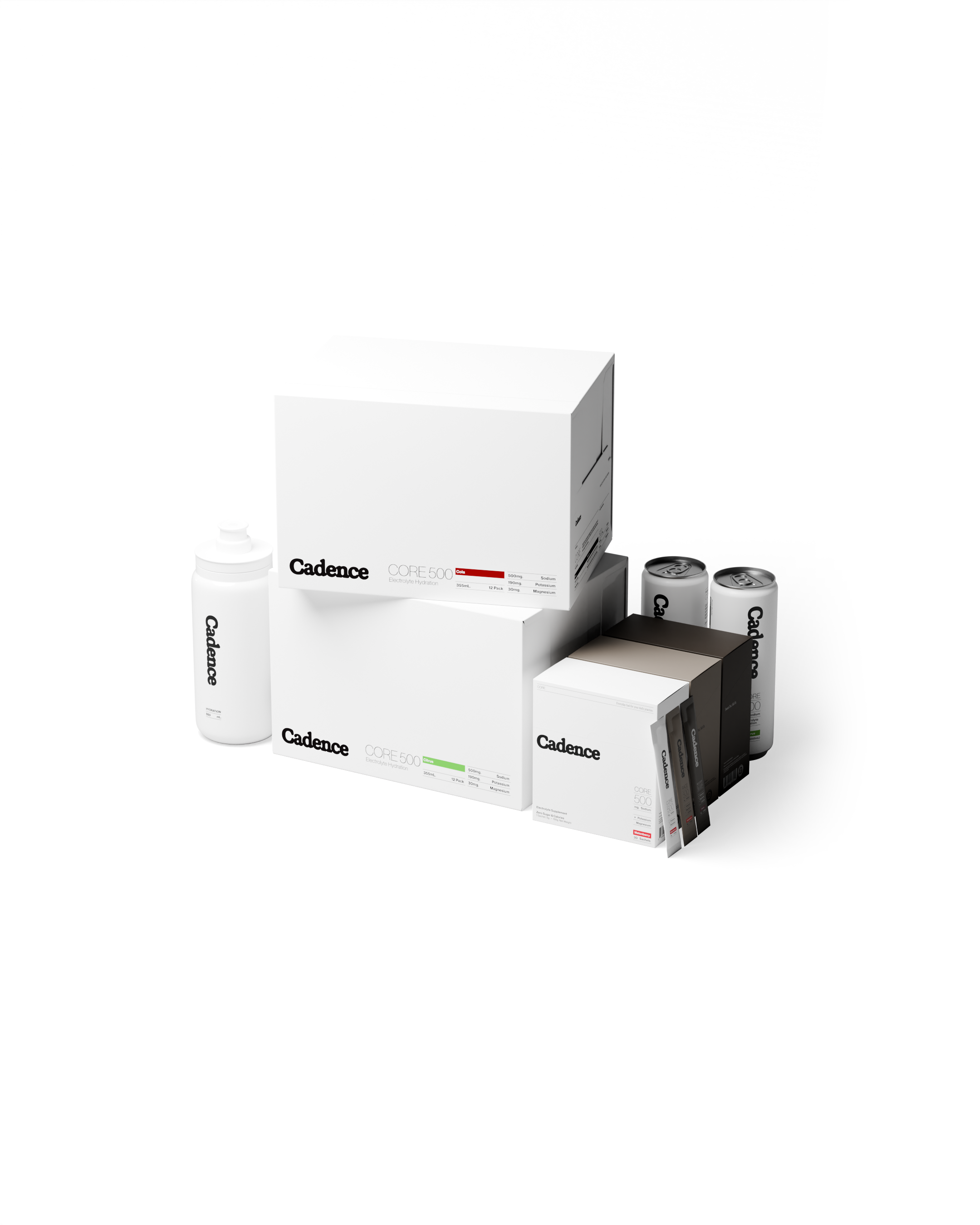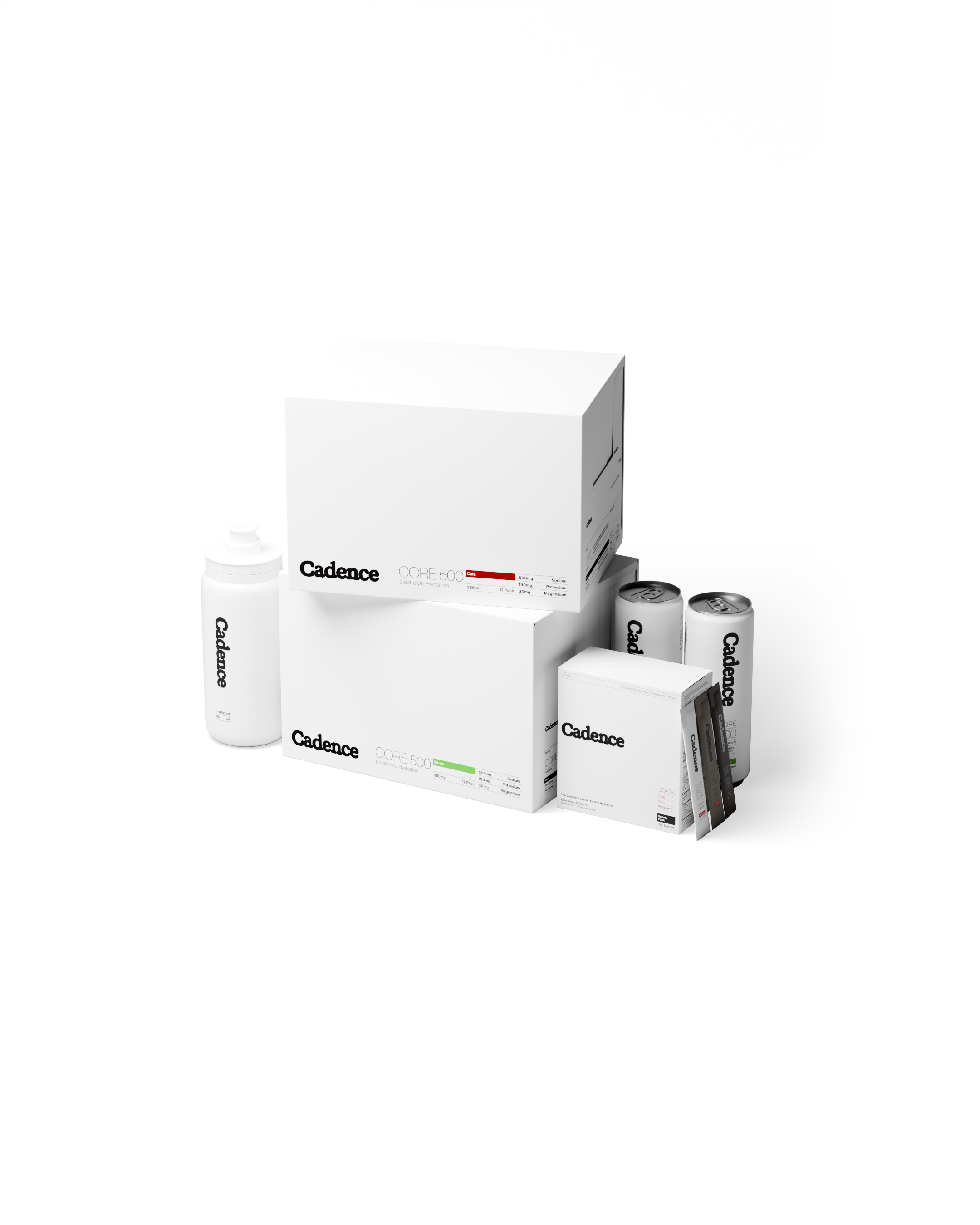Introduction
Potassium is an essential mineral and electrolyte which is instrumental for many bodily functions. It plays a key role in maintaining fluid balance, transmitting nerve signals, and regulating muscle contractions, including those of the heart.
Adequate potassium intake is associated with numerous health benefits, such as reducing blood pressure, lowering the risk of stroke, and preventing osteoporosis. Potassium is particularly important for athletes and people engaging in regular physical activity, predominantly due to its impact on fluid balance. It helps to regulate fluid balance across the body and within cells, and replace the electrolytes lost through sweat, supporting efficient muscle function.
This article will present the current research on potassium, with respect to how it impacts our health and hydration (via its effects on fluid balance, electrolyte balance and cellular function). It will then discuss bodies of research on global potassium intake data, as well as recommending some dietary sources which can help you increase your daily intake of this mineral.
Potassium’s Impact on Health
Increased potassium intake has been shown to be beneficial for cardiovascular health, particularly in reducing blood pressure and potentially reducing the risk of stroke. One comprehensive meta-analysis found that higher potassium consumption is associated with lowering blood pressure in those with hypertension. Furthermore, there was statistically significant evidence for increased potassium intake and lowering the risk of stroke by 24% (Aburto et al., 2013). The meta analysis, published in the British Medical Journal, reported that potassium can reduce systolic blood pressure by an average of 3.49 mm Hg and diastolic blood pressure by 1.96 mm Hg, especially in hypertensive individuals.
A similar study which was published in the Journal of the American Heart Association confirmed these reports. The study reported that adequate intake of potassium is desirable to achieve a lower blood pressure level but also suggest excessive potassium supplementation should be avoided, particularly in specific subgroups. (Fillippini et al., 2020).
Another study has highlighted that higher potassium intake may be associated with a lower risk of CVD events, with women experiencing a slightly more pronounced benefit compared to men (Wouda et al., 2022). The study found that women with high sodium intake who increased their potassium consumption showed a significant reduction in systolic blood pressure. Higher potassium intake and a lower sodium to potassium ratio was also associated with reduced mortality in a more recent study (Gan et al., 2024). This ultimately suggests a synergistic link between potassium and sodium intake in managing blood pressure, thus potentially reducing CVD risk. This is discussed in more detail in our article on sodium.
Potassium’s Impact on Fluid Balance
Potassium plays a key role in fluid balance and hydration by helping to maintain proper cellular function and electrolyte balance. Potassium is the most abundant positively charged ion inside cells and has been shown to be necessary for nerve transmission, muscle contraction, and maintaining the acid-base balance (Campbell, 2009). Approximately 90% of potassium is found within cells, where it helps to counterbalance sodium's effects, ensuring proper hydration and preventing excessive fluid retention (Roumelioti et al., 2018).
The sodium-potassium pump is a mechanism which helps to maintain fluid balance in the body by transporting sodium out of cells and potassium into cells. This pump is essential for various physiological processes, including maintaining the osmotic balance and proper cellular function. Sufficient potassium intake can improve hydration and fluid balance, significantly impacting health by preventing dehydration and supporting cardiovascular health (Perez-Castillo et al., 2024).
Research shows that beverages with adequate potassium levels may significantly improve hydration status by the process of maintaining plasma volume and reducing dehydration effects. Hydration formulas rich in potassium can improve fluid retention and accelerate rehydration following exercise. These benefits have been shown to be necessary for athletes to maintain performance and prevent hypohydration related issues in the body (Perez-Castillo et al., 2024).
The Data on Global Potassium Intake
The general consensus is that global potassium intake is significantly below the recommended levels. Reddin et al. (2023) carried out a meta analysis of 104 studies, including 52 countries, and found that potassium intake globally averaged 2.25 g/day, compared to the World Health Organization's guideline of >3.5 g/day. It was presented that only about 14% of the global population meets this guideline. Low potassium intake is mostly prevalent in East Asia, where mean intake is 1.89 g/day, whilst Eastern and Western Europe have higher and adequate mean intakes of 3.53 g/day and 3.29 g/day, respectively (Reddin et al., 2023).
It was identified by the Dietary Guidelines for Americans 2010 Advisory Committee that potassium is a shortfall nutrient (Weaver, 2013). Weaver (2013) further discusses that modern western diets have led to a decrease in potassium intake, with reduced consumption of fruits and vegetables concurrently leading to increased sodium intake from processed foods. Weaver (2013) continues that consumption of white vegetables is associated with decreased risk of stroke, possibly related to their high potassium content.
Dietary Sources of Potassium
Rich sources of potassium include bananas, sweet potatoes, spinach, avocados, beans, salmon, tomato sauce, yogurt, oranges, potatoes, and coconut water. You would need to consume around 8 cups (1.9 litres) of coconut water to provide the RDA of 4,700 mg.
The below list displays some foods considered high in potassium. It presents the amount of potassium per described serving, in milligrams.
- Apricots, dried, ½ cup = 755mg
- Lentils, cooked, 1 cup = 731mg
- Squash, acorn, mashed, 1 cup = 644mg
- Prunes, dried, ½ cup = 635mg
- Raisins, ½ cup = 618mg
- Potato, baked, flesh only, 1 medium = 610mg
- Kidney beans, canned, 1 cup = 607mg
- Orange juice, 1 cup = 496mg
- Soybeans, mature seeds, boiled, ½ cup = 443mg
- Banana, 1 medium = 422mg
- Milk, 1%, 1 cup = 366mg
- Spinach, raw, 2 cups = 334mg
- Chicken breast, boneless, grilled, 3 ounces = 332mg
- Salmon, Atlantic, farmed, cooked, 3 ounces = 326mg
- Beef, top sirloin, grilled, 3 ounces = 315mg
- Molasses, 1 tablespoon = 308mg
- Tomato, raw, 1 medium = 292mg
- Soymilk, 1 cup = 287mg
- Yogurt, Greek, plain, nonfat, 6 ounces = 240mg
- Broccoli, cooked, chopped, ½ cup = 229mg
- Turkey breast, roasted, 3 ounces = 212mg
- Asparagus, cooked, ½ cup = 202mg
- Apple, with skin, 1 medium = 195mg
- Cashew nuts, 1 ounce = 187mg
Potassium absorption can be influenced by high sodium intake, which increases potassium excretion, and magnesium, necessary for its proper utilisation. Excessive dietary fibre and high calcium intake can also impair potassium absorption, while alcohol and caffeine can increase its urinary excretion.
Conclusion
To conclude, potassium is a mineral which is necessary in the body for maintaining fluid electrolyte balance, supporting cardiovascular health and optimising hydration, particularly for athletes. Despite this, the data shows us that global intake of potassium is significantly below recommended levels.
Whilst there are plenty of dietary sources you can implement to increase your intake of potassium, you may also wish to supplement to help get to your daily target. Our hydration drinks contain 195mg of potassium chloride per serving.
Whilst you're here, be sure to check out our range of electrolyte sachets, all which contain potassium. Our Core Hydration Electrolyte Sachets and Energy Hydration Sachets each contain 200mg of potassium chloride, whilst our Sleep Hydration Sachets contain 100mg of potassium chloride. If you're looking to try all of our electrolyte sachets, then be sure to check out our variety pack of hydration sticks.
Frequently Asked Questions (FAQs)
What are the benefits of adequate potassium intake?
Potassium is a key mineral for several functions in the body, including maintaining fluid and electrolyte balance, supporting nerve function, and regulating muscle contractions.
Why is potassium particularly important for athletes?
Athletes benefit significantly from potassium due to its role in maintaining fluid balance and replacing electrolytes lost through sweat. This helps prevent dehydration and ensures muscles function efficiently during intense physical activities.
What are some good dietary sources of potassium?
Foods rich in potassium include bananas, sweet potatoes, spinach, avocados, beans, salmon, yoghurt, oranges, and coconut water. Consuming a variety of these foods can help meet the recommended daily intake of potassium.
What is the global intake of potassium and how does it compare to recommended levels?
Globally, the average intake of potassium is about 2.25 grams per day, which is significantly lower than the World Health Organization's recommended intake of over 3.5 grams per day. Only about 14% of the global population meets this guideline, with intake varying significantly by region.
How does potassium impact fluid and electrolyte balance in the body?
Potassium is the primary positively charged ion inside cells and plays a key role in maintaining proper cellular function as well as electrolyte balance. It works alongside sodium to operate the sodium-potassium pump, which helps regulate the movement of fluids and ions across cell membranes, which is required for hydration and preventing excessive fluid retention.
References
Aburto N J, Hanson S, Gutierrez H, Hooper L, Elliott P, Cappuccio F P et al. Effect of increased potassium intake on cardiovascular risk factors and disease: systematic review and meta-analyses BMJ 2013; 346 :f1378 doi:10.1136/bmj.f1378
Filippini, T., Naska, A., Kasdagli, M., Torres, D., Lopes, C., Carvalho, C., … Vinceti, M. (2020). Potassium intake and blood pressure: A dose‐response meta‐analysis of Randomized Controlled Trials. Journal of the American Heart Association, 9(12). doi:10.1161/jaha.119.015719
Wouda, R. D., Boekholdt, S. M., Khaw, K. T., Wareham, N. J., de Borst, M. H., Hoorn, E. J., Rotmans, J. I., & Vogt, L. (2022). Sex-specific associations between potassium intake, blood pressure, and cardiovascular outcomes: the EPIC-Norfolk study. European heart journal, 43(30), 2867–2875. https://doi.org/10.1093/eurheartj/ehac313
Gan, L., Zhao, B., Inoue-Choi, M. et al. Sex-specific associations between sodium and potassium intake and overall and cause-specific mortality: a large prospective U.S. cohort study, systematic review, and updated meta-analysis of cohort studies. BMC Med 22, 132 (2024). https://doi.org/10.1186/s12916-024-03350-x
Iain Campbell, Physiology of fluid balance, Anaesthesia & Intensive Care Medicine, Volume 10, Issue 12, 2009, Pages 593-596, ISSN 1472-0299, https://doi.org/10.1016/j.mpaic.2009.09.001. (https://www.sciencedirect.com/science/article/pii/S1472029909002215)
Roumelioti, M. E., Glew, R. H., Khitan, Z. J., Rondon-Berrios, H., Argyropoulos, C. P., Malhotra, D., Raj, D. S., Agaba, E. I., Rohrscheib, M., Murata, G. H., Shapiro, J. I., & Tzamaloukas, A. H. (2018). Fluid balance concepts in medicine: Principles and practice. World journal of nephrology, 7(1), 1–28. https://doi.org/10.5527/wjn.v7.i1.1
Pérez-Castillo ÍM, Williams JA, López-Chicharro J, Mihic N, Rueda R, Bouzamondo H, Horswill CA. Compositional Aspects of Beverages Designed to Promote Hydration Before, During, and After Exercise: Concepts Revisited. Nutrients. 2024; 16(1):17. https://doi.org/10.3390/nu16010017
Reddin, C., Ferguson, J., Murphy, R., Clarke, A., Judge, C., Griffith, V., Alvarez, A., Smyth, A., Mente, A., Yusuf, S., & O'Donnell, M. J. (2023). Global mean potassium intake: a systematic review and Bayesian meta-analysis. European journal of nutrition, 62(5), 2027–2037. https://doi.org/10.1007/s00394-023-03128-6
Weaver C. M. (2013). Potassium and health. Advances in nutrition (Bethesda, Md.), 4(3), 368S–77S. https://doi.org/10.3945/an.112.003533
